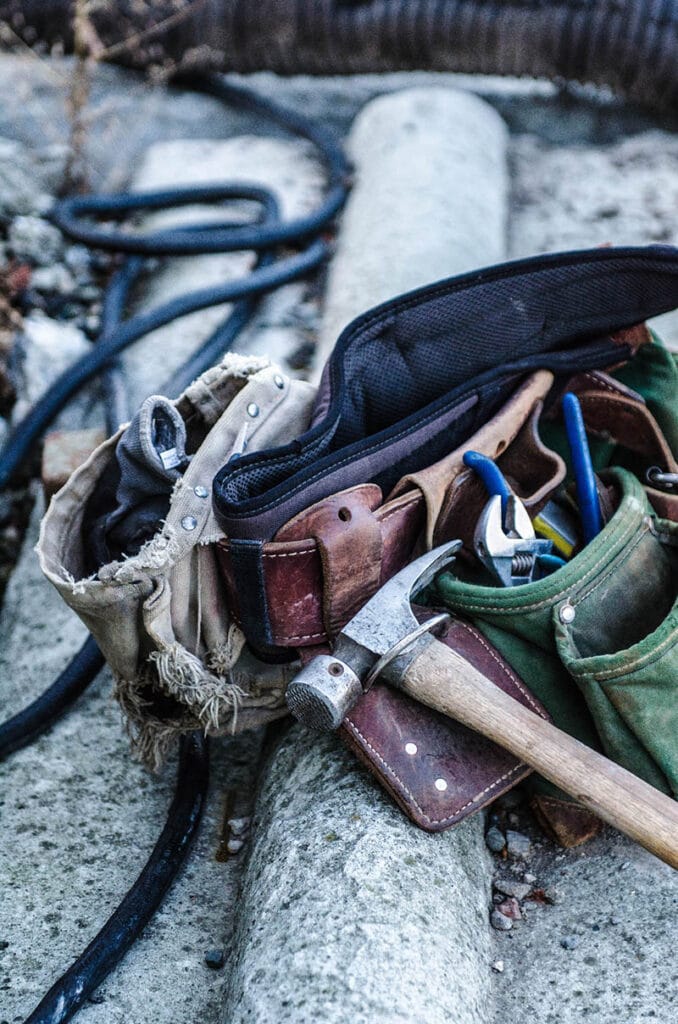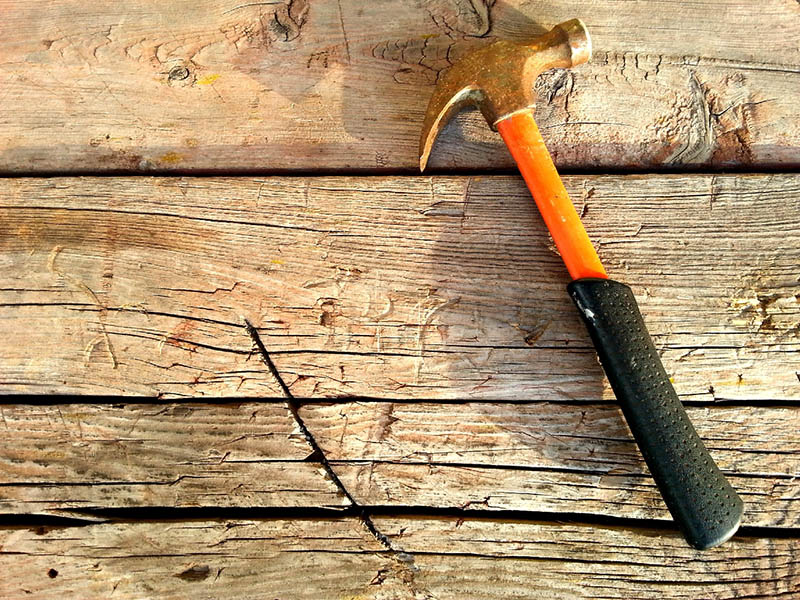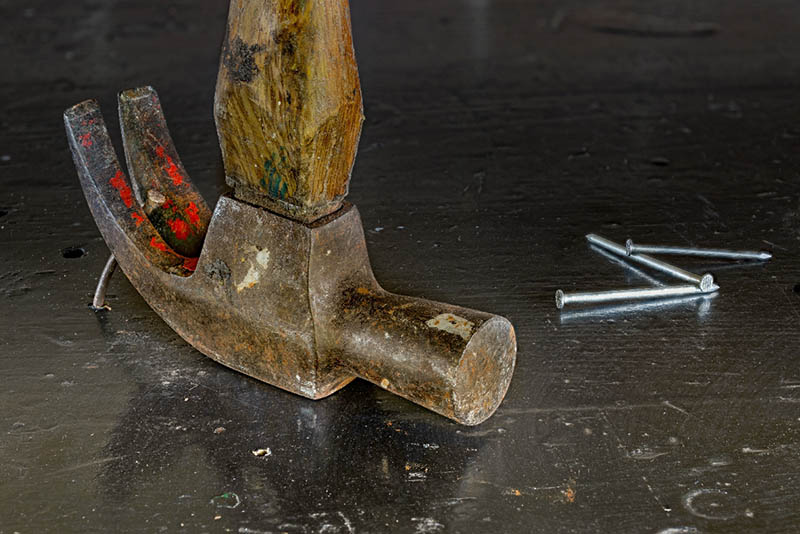Claw Hammer vs Framing Hammer: Pros, Cons, & Differences
-
Pete Ortiz
- Last updated:

There are 40+ types of hammers on the market, and they all serve a purpose. But today, we want to focus on two of the most commonly used varieties: the claw and the framing hammers. Now, these terms are often used interchangeably; however, they are NOT the same thing, although they do look very much alike. Framing hammers are bigger and stronger yet lack the precision of a claw hammer.
So, which hammer should you choose for your next DIY project? Are claw hammers a better pick for most tasks around the house, or not? Can a framing hammer replace its claw “sibling” or not? We have all the answers right here! Join us, and let’s compare these hand tools in terms of their advantages, disadvantages, best uses, pricing, ease of use, and more!
At A Glance
- Available at a low price
- Tends to slip off of nail heads
- Best for pulling nails out
- Handles most tasks around the house
- Slightly on the expensive side
- Doesn’t slip off of nail heads
- Excels at prying nailed boards
- Specifically designed for framing
Overview of a Claw Hammer
A curved head, short handles, and an affordable price tag: that’s the best way to describe claw hammers. These tools are incredibly popular not only in the US but also around the globe. But what makes a claw hammer stand out? What’s the best use for it? And, more importantly, how accurate, user-friendly, and powerful is it? Here’s a more detailed review:

What Is a Claw Hammer? Breaking It Down
Also known as finish hammers, claw hammers are a go-to choice for carpenters. In contrast to framing hammers, they don’t damage the surface. So, if you’re looking to drive nails into expensive wood (like maybe premium furniture) without chipping it, this tool will be a great investment. Accuracy is another big pro of claw hammers. This has to do with the curved head: it allows for easy control of the handle, which results in precision hammering.
On the other side of the head (which weighs 10–16 ounces), it has a “claw”—hence the name. It does a great job of removing nails without breaking the wood or requiring too much effort on your side. More importantly, claw hammers aren’t at all expensive. You can get two or even three finish hammers for the price of a single framing hammer. When it comes to carpentry, claw hammers are perfect both for driving nails in and pulling them out.
Common Uses for Claw Hammers
For many centuries, these tools have been used for woodworking. You can’t, however, use a claw hammer on metal surfaces simply because the head isn’t strong enough. You’ll end up damaging both the surface and the hammer. So, that’s the first con of claw hammers. But, it’s well-compensated by the pros, including minimal damage, accuracy, and a low price. Finish hammers are often found both on construction sites and in regular households.
Flexibility is the name of the game here: this tool is used to drive nails into most types of wood used for DIY projects. As long as it’s capable of handling the nails, you can rely on the hammer to complete the project. Garages, garden beds, tables, chairs, and ladders for the swimming pool are just some of the examples where finish hammers are used.

Claw Hammer Variations
Most claw hammers consist of two pieces: the head and the handle. The head is manufactured from steel; the handle can be wooden, steel, or carbon/glass fiber. Single-piece claw hammers are also common. As you’ve probably already guessed, these tools are monolithic. That means both components are crafted from heat-treated steel. Polymer grips, in turn, keep vibrations to a minimum.
- Minimal surface damage
- Excels at pulling nails out
- Incredibly accurate
- Quite affordable
- Not suitable for heavy-duty tasks
- Requires skill to use
Overview of a Framing Hammer
These hammers are larger, heavier, and more suited for framing gigs. You could say that a framing hammer is the oversized version of the claw hammer. Thanks to the bigger and stronger head, it can take a lot of “abuse” and won’t break or chip under pressure. Plus, the claw is straighter. So, does that mean it’s a better choice? Well, not quite. While framing hammers do, of course, have their pros, you should always consider the weak sides as well. Here’s a more detailed look:

What Is a Framing Hammer? Breaking It Down
In some ways, a framing hammer is the same as a claw hammer. But it’s larger. More importantly, its head is flat and textured (waffle-faced). What does that mean in practice? Because the head is flat, it won’t be slipping off of nail heads nearly as often as a claw hammer. On top of that, this hand tool is significantly heavier. Titanium heads weigh 12–16 ounces; steel heads weigh 20–32 ounces. Thus, it’s more powerful and takes less hammering to drive nails into the surface.
Another thing that makes this hammer stand out is the handle. It’s longer and thicker, which ensures a stronger grip. However, the extra weight also means you’ll get tired sooner. On average, using a framing hammer for more than 1–2 hours is not recommended. And one more thing: framing hammers aren’t at all gentle: they are known to mar surfaces no matter how careful you are.
Common Uses for Framing Hammers
As the name suggests, framing hammers are good for framing! In fact, they were specifically designed with this task in mind. We’re talking about the framing of exterior walls, interior partition framing, flooring, decking, roof/ceiling framing, and concrete formwork. Since you don’t have to be very delicate when working on the frames (nobody can see them once the house is built), these tools are a highly labor-efficient choice.
They are rather durable, and the above-average weight makes them an even better pick. With a framing hammer, the number of required blows to push a nail in is very low. The longer handle, in turn, ensures higher head speed, making the hammer more effective. Plus, it’s also used for prying nailed boards apart. You can remove nails with it as well, but the results won’t be very satisfying.

Framing Hammer Variations
There aren’t that many types of framing hammers out there. As mentioned, the heads can either be steel or titanium. For handles, wood is the most common option, yet it tends to break. Steel is practically unbreakable, but it has poor shock absorption properties. Fiberglass is a better pick in this regard. Both steel and fiberglass handles come with rubber grips for user comfort. These days, framing hammers are slowly being replaced by nail guns.
- Extra weight equals more hitting power
- Longer handle for a better grip
- Doesn’t slip off of nail heads
- Great for prying boards apart
- Can lead to arm fatigue
- Tends to damage the wood
FAQ
What Do Claw and Framing Hammers Have in Common?
Framing and claw hammers look very much alike. They do differ in size and overall shape, but to the naked eye, they are almost identical. First, both hammers feature steel heads. Next, no matter which tool you pick, you’ll find a striking face on one hand (for pushing nails in) and a claw on the other one for prying out nails. The big question is—can you use these hammers interchangeably, meaning drive large nails with a finish hammer or do accurate work with a framing hammer?
The short answer is no. There’s a reason why construction workers don’t use claw hammers for framing houses: they simply aren’t as powerful. The same is true for using framing hammers on expensive wood: it’s almost impossible to drive the nails in without damaging the surface. If you don’t have an alternative and HAVE to get the job done ASAP, you can, of course, try your luck. This is especially true for DIY projects that don’t have to be perfect.
Are Claw Hammers Easier to Use?
Framing hammers have longer handles, which equals a stronger grip. On top of that, their heads don’t slip off the nail heads, which is a big pro. However, your hands will get tired sooner when using a framing hammer. Besides, since it’s heavier, it will hurt more if you accidentally hit your fingers with it. Finish hammers are lightweight and easier to control. You will have to put in more effort to drive the nails in, that’s true, but that means more practice for you.
So, generally speaking, claw hammers are a better pick if you’ve never used such a tool before. It will also be a more preferable choice for someone that wants to teach their kids how to handle a hammer.

Which Tool Is More Affordable?
If you’re on a tight budget and need a cheap hammer to use around the house, go with a claw hammer. These tools are highly affordable and won’t cost more than $50–60. You can even get a decent-quality claw hammer for as low as $5–10, and it will serve for a long time. As for framing hammers, it all comes down to size, weight, and materials. The bigger and heavier the head, the higher the cost will be.
Longer handles affect the price as well, but the quality of the head (and its texture) has the most significant impact on the price. Right now, the cheapest framing hammers are available for $20–30. On the other side of the spectrum, we have tools that come in at $200–300. These hammers last longer, feel more comfortable thanks to ergonomic handles, and deliver the necessary force for bigger-than-average nails.
Which Hammer Is the Better Pick for You?
With hammers, there are no right or wrong picks—it all depends on what you’re looking for. Claw hammers are more accurate: they don’t damage the surface nearly as much as framing hammers do. That’s because you get more control over each swing. On top of that, claw hammers can pull average-sized nails without breaking a sweat. And if we take framing hammers, they are the go-to choice for construction workers involved in large-scale projects.
Thanks to their formidable size, these hammers are perfect for some heavy-duty work when you need to drive a bunch of nails quickly. Besides, the handles provide a tight grip, while the heads are nice and flat, which means they don’t slip off nails. Framing hammers do cost a bit more, though. So, go back to our pros and cons, check out the quick comparison chart, and take your pick!
- Nailing accuracy is a top priority
- You don’t want to ruin the surface
- This is your first time using a hammer
- You’re pulling out small/medium-sized nails
- More force over less precision is preferred
- You’re working with heavy-duty wood
- The project involves lots of framing
- You have to pry nailed boards apart
Conclusion
And that concludes our comparison of claw and framing hammers! We went over their pros, cons, and common uses. Next, we compared the two hand tools in terms of usability and affordability. Summing up, if you need a hammer for everyday use, go with claw/finish hammers. But, if you’re looking for a specialized tool (like for framing a house), invest in a framing hammer.
It’s safe to say that framing hammers are the larger, more capable, and more expensive version of finish hammers. They’re not nearly as versatile or accurate, but when used properly, these hammers do prove their worth. Ideally, you should keep both hammers in the toolbox. This way, you’ll always have the right tool for the task at hand!
Featured Image Credit: JumpStory
Contents




